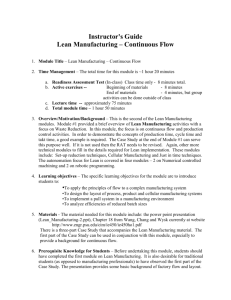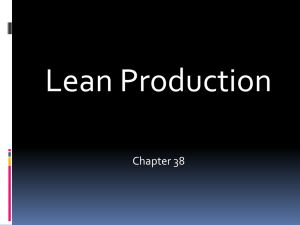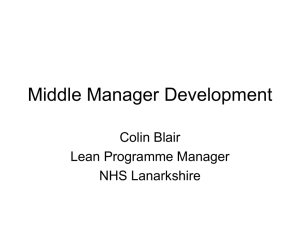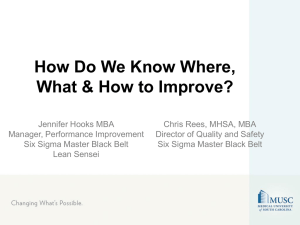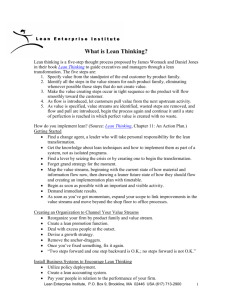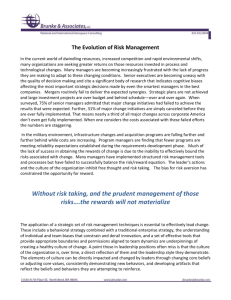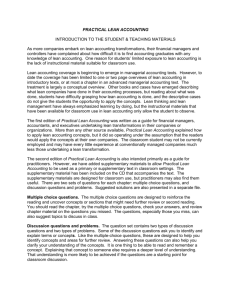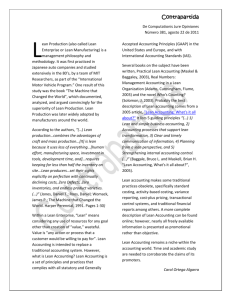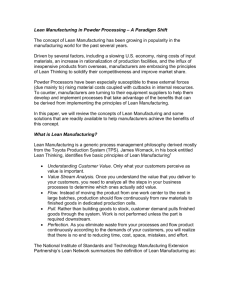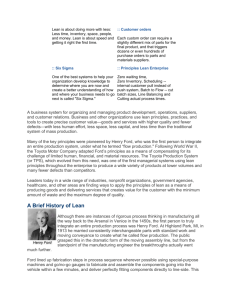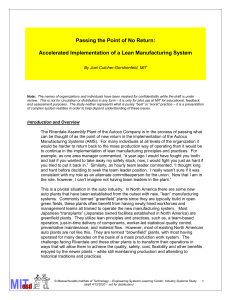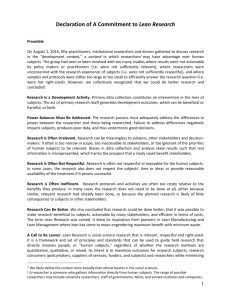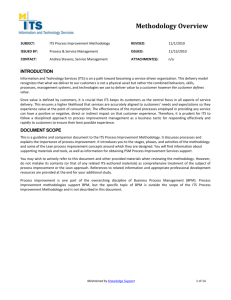Guide 2
advertisement
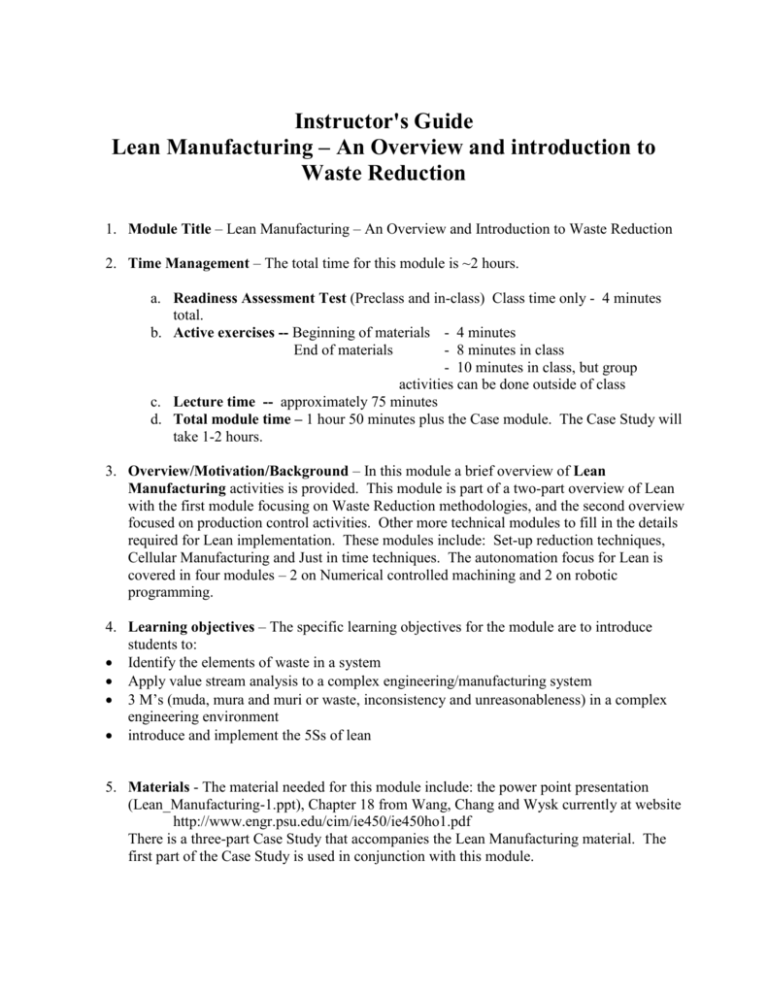
Instructor's Guide Lean Manufacturing – An Overview and introduction to Waste Reduction 1. Module Title – Lean Manufacturing – An Overview and Introduction to Waste Reduction 2. Time Management – The total time for this module is ~2 hours. a. Readiness Assessment Test (Preclass and in-class) Class time only - 4 minutes total. b. Active exercises -- Beginning of materials - 4 minutes End of materials - 8 minutes in class - 10 minutes in class, but group activities can be done outside of class c. Lecture time -- approximately 75 minutes d. Total module time – 1 hour 50 minutes plus the Case module. The Case Study will take 1-2 hours. 3. Overview/Motivation/Background – In this module a brief overview of Lean Manufacturing activities is provided. This module is part of a two-part overview of Lean with the first module focusing on Waste Reduction methodologies, and the second overview focused on production control activities. Other more technical modules to fill in the details required for Lean implementation. These modules include: Set-up reduction techniques, Cellular Manufacturing and Just in time techniques. The autonomation focus for Lean is covered in four modules – 2 on Numerical controlled machining and 2 on robotic programming. 4. Learning objectives – The specific learning objectives for the module are to introduce students to: Identify the elements of waste in a system Apply value stream analysis to a complex engineering/manufacturing system 3 M’s (muda, mura and muri or waste, inconsistency and unreasonableness) in a complex engineering environment introduce and implement the 5Ss of lean 5. Materials - The material needed for this module include: the power point presentation (Lean_Manufacturing-1.ppt), Chapter 18 from Wang, Chang and Wysk currently at website http://www.engr.psu.edu/cim/ie450/ie450ho1.pdf There is a three-part Case Study that accompanies the Lean Manufacturing material. The first part of the Case Study is used in conjunction with this module. 6. Prerequisite Knowledge for Students – Before undertaking this module, students should be familiar with planning for manufacturing (see Readiness assessment test or a variant of the test should be given without the processing flavor). The readings for the module includes up to Section 18.2 of the website chapter. 7. Preparation requirements (for the instructor) – The instructor should decide whether he/she will use the Case Study before going over the material. If the Case Study is not used, the discussion should focus around several examples of waste reduction. No other special preparation is needed in order to be ready for the classroom discussion. 8. Hints/Traps including suggested discussion topics and questions – This module has been delivered to undergraduate engineering students as well as plant managers and general managers. Practioners will want to work on Case examples and share their experience. It can be difficult to move them back to the materials 9. Readings and useful references - Chapter 18 from Wang, Chang and Wysk currently at website http://www.engr.psu.edu/cim/ie450/ie450ho1.pdf The book should be in print sometime in 2004. The Machine that Changed the World, by Womack, Jones, Roos 1990 10. Classroom/computer and other requirements - No special classroom arrangement (teams, circle discussion, etc.) is needed. 11. Homework – If the Case study is not used, the students should be given an assignment to locate a process and begin Value Stream Mapping and Waste reduction. If the Case Study is used, it will be the focus of Waste Reduction. 12. Exam Questions – a. b. c. d. What are the 3 Ms of Lean? Define them. List the 7 types of waste. What are the 5Ss of Lean? Match the Japanese term to its meaning 1. 2. 3. 4. 5. 6. Kaikaku Kaizen Jidoka Poka-yoke Shojinka Teien systems dynamic optimization of # of workers worker suggestions visual signals radical change autonomation continuous improvement & standard work



